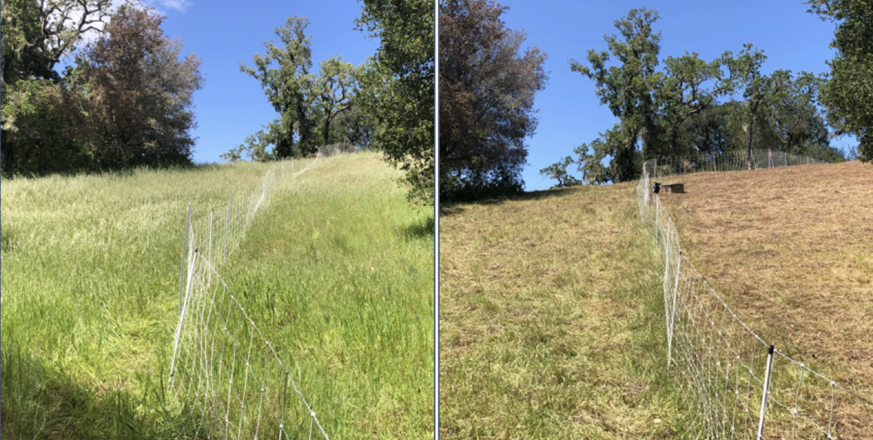Recommendations for Merging Fire Fuel Mitigation with Stewardship Practices

Earlier this summer, Jasper Ridge hosted a Fire Fuels Ecology workshop with 25 experts in the areas of wildfire modeling, fire emergency response, land-management, risk management, indigenous practice, research, education, policy making, law and ecology. The purpose of the workshop was to review the 2021 Stanford Wildfire Management Plan (2021 SWMP) which identifies areas for fuel reduction across all University lands, including at the preserve.
Jasper Ridge is located in the WUI (Wildland Urban Interface), and consists of natural ecosystems that have evolved with frequent low-to-moderate intensity fires that naturally occurred or were associated with Indigenous peoples. These historical regular wildfires provided both periodic fuel reduction and enhanced ecosystem integrity. Yet, the perceived risk of fire lead to suppression policies in the twentieth century as modern development expanded into the WUI. Suppression activities lead to increased vegetation growth and build up of potential fuels. This shifted focus in the twenty-first century to vegetative fuel reduction intended to mitigate fire risk to people and structures in the event of an unintended ignition. Vegetation management for fuel reduction is designed to modified wildfire behavior, which can be accomplished through a variety of treatment approaches. When designed appropriately, treatments can meet multiple goals, such as reducing fuels while improving ecological integrity.
With this in mind, the group of experts was assembled discuss how Jasper Ridge can strategically develop fuel reduction treatments to address the 2021 SWMP while meeting overall stewardship goals of the preserve. In fact, Jasper Ridge already serves as a natural laboratory and can provide an ideal opportunity for place-based research in designing best practices for ecologically sensitive fuel reduction strategies.
The workshop included a symposium of presentations by the experts, followed by a tour of current fuel reduction areas at Jasper Ridge, and a series of intensive breakout discussions. The workshop had three goals:
- Discuss the risks beyond wildfire modeling efforts from the 2021 SWMP that should be considered in developing appropriate fuel reduction treatments for Jasper Ridge.
- Examine ecological stewardship strategies that balance wildfire risk mitigation through fuel reduction with supporting and enhancing ecosystem integrity.
- Identify opportunities to learn, communicate, and employ best practices of fuel reduction methods at Jasper Ridge, with the aim of informing best practices in similar landscapes.
The outcome of the workshop was a synthesis of consensus by workshop participants on all matters discussed in a white paper titled Recommendations for Merging Fire Fuel Mitigation with Stewardship Practices to Maintain Biodiversity and Ecosystem Function at Jasper Ridge Biological Preserve. Collectively, they developed three key recommendations:
- Communicating Risk: Clearly communicate 1) how wildfire risk is modeled, including underlying assumptions and limitations, and 2) that modeling is a first step in developing a fuel reduction strategy that also includes liability, enterprise, and reputational risks.
- Ecological Integrity: Emphasize ecologically sensitive and sustainable fuel reduction treatment design for Jasper Ridge.
- Adaptive Management: Approach fire-risk mitigation through adaptive management that draws on diverse areas of expertise, experience, responsibility, and engagement, and which incorporates all aspects of Jasper Ridge’s mission of research, education, and conservation in its treatment plans.
The white paper will support Jasper Ridge staff in working with our colleagues from LBRE (Land, Buildings & Real Estate), Field Conservation Facility, Environment Health and Safety to build upon the Stanford Wildfire Management Plan and develop ecologically sensitive fuel reduction treatments for Jasper Ridge.
Top of page: Photos comparing pre-treatment and post-treatment of grassland where fuel reduction occurred by goats and sheep, Spring 2022.

Sheena Sidhu
Staff Scientist
Jasper Ridge Biological Preserve



